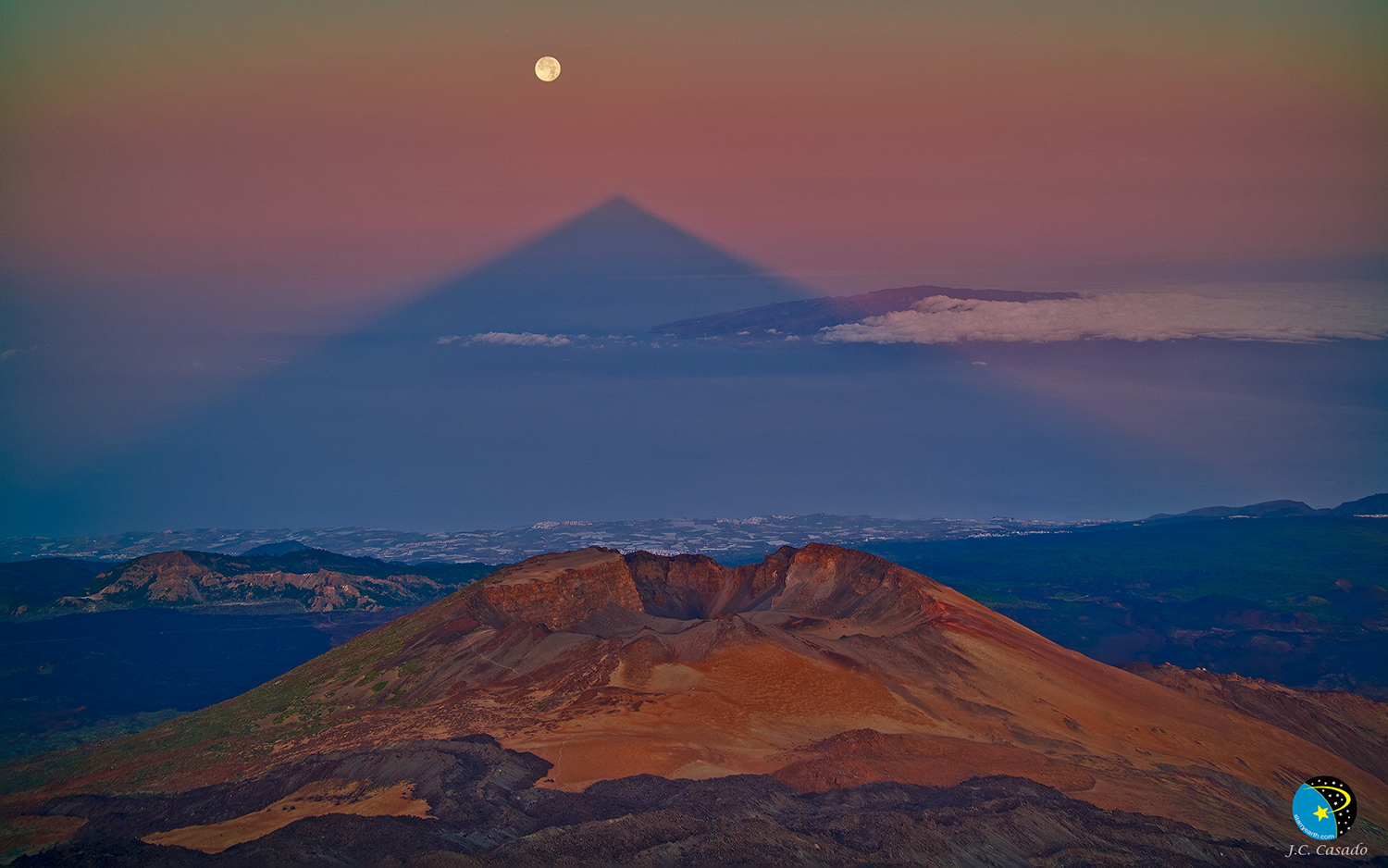Volcano's Shadow Forms an Eerie, Perfect Triangle

A remarkable photo showing the summit of a volcano in Spain's Canary Islands includes something odd: a shadow of the flat-topped peak forming a perfect triangle.
Photographer Juan Carlos Casado captured the image of Mount Teide, or Pico de Teide, a dormant volcano on the island of Tenerife with a peak that towers 12,000 feet (3,700 meters) above sea level. The image was shared on June 9 on NASA's Astronomy Picture of the Day (APOD) website.
Though the shadow resembles a pyramid, Mount Teide doesn't have a pointed peak. Rather, the shadow appears triangular because of how our eyes perceive it relative to the distant horizon, according to APOD. [The Most Amazing Optical Illusions (and How They Work)]
When artists draw parallel lines extending off into the distance along a single plane, the lines draw closer to each other until they converge at the horizon; this spot where they meet is known as the vanishing point. This happens when you observe real-life parallel lines, too. For instance, if you observe train tracks that continue straight ahead, they appear to draw closer together and meet at a central point on the horizon.
A similar effect is taking place in the photo, APOD explained. In the image, Mount Teide is clearly no pyramid; the Pico Viejo crater flattens the mountain's peak. Nevertheless, as Mount Teide's shadow extends into the distance, it tapers gradually. In doing so, the shadow eventually forms a triangular peak, even though the object casting the shadow isn't a triangle.
A person standing on a summit during sunrise or sunset (when shadows are at their longest) will peer down a corridor of shadow; from that perspective, the shadows of mountains or volcanoes nearly always resemble pyramids, according to the U.K. website Atmospheric Optics. This is because the shadows are so long that a viewer can't possibly see where they end, so their termination appears as a point on the horizon rather than a true representation of the mountain's shape, Atmospheric Optics explained.
- Optical Illusions: A Gallery of Visual Tricks
- 7 Illusions That Blew Our Minds in 2018
- Eye Tricks: Gallery of Visual Illusions
Originally published on Live Science.
Sign up for the Live Science daily newsletter now
Get the world’s most fascinating discoveries delivered straight to your inbox.

Mindy Weisberger is an editor at Scholastic and a former Live Science channel editor and senior writer. She has reported on general science, covering climate change, paleontology, biology and space. Mindy studied film at Columbia University; prior to Live Science she produced, wrote and directed media for the American Museum of Natural History in New York City. Her videos about dinosaurs, astrophysics, biodiversity and evolution appear in museums and science centers worldwide, earning awards such as the CINE Golden Eagle and the Communicator Award of Excellence. Her writing has also appeared in Scientific American, The Washington Post and How It Works Magazine. Her book "Rise of the Zombie Bugs: The Surprising Science of Parasitic Mind Control" will be published in spring 2025 by Johns Hopkins University Press.









